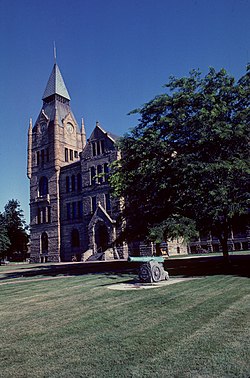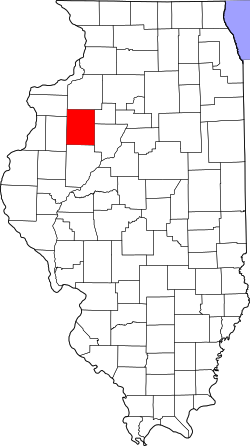Knox County, Illinois | |
|---|---|
 | |
 Location within the U.S. state of Illinois | |
| Coordinates: 40°56′N90°13′W / 40.93°N 90.21°W | |
| Country | |
| State | |
| Founded | 1825 |
| Named after | Henry Knox |
| Seat | Galesburg |
| Largest city | Galesburg |
| Government | |
| • Board Chairman | Jared Hawkinson |
| Area | |
• Total | 720 sq mi (1,900 km2) |
| • Land | 716 sq mi (1,850 km2) |
| • Water | 3.4 sq mi (8.8 km2) 0.5% |
| Population (2020) | |
• Total | 49,967 |
• Estimate (2024) | 48,716 |
| • Density | 69.8/sq mi (26.9/km2) |
| Time zone | UTC−6 (Central) |
| • Summer (DST) | UTC−5 (CDT) |
| Congressional district | 17th |
| Website | knoxcountyil |
Knox County is a county in the U.S. state of Illinois. According to the 2020 census, it had a population of 49,967. [2] Its county seat is Galesburg. [3] Knox County comprises the Galesburg, IL Micropolitan Statistical Area.




